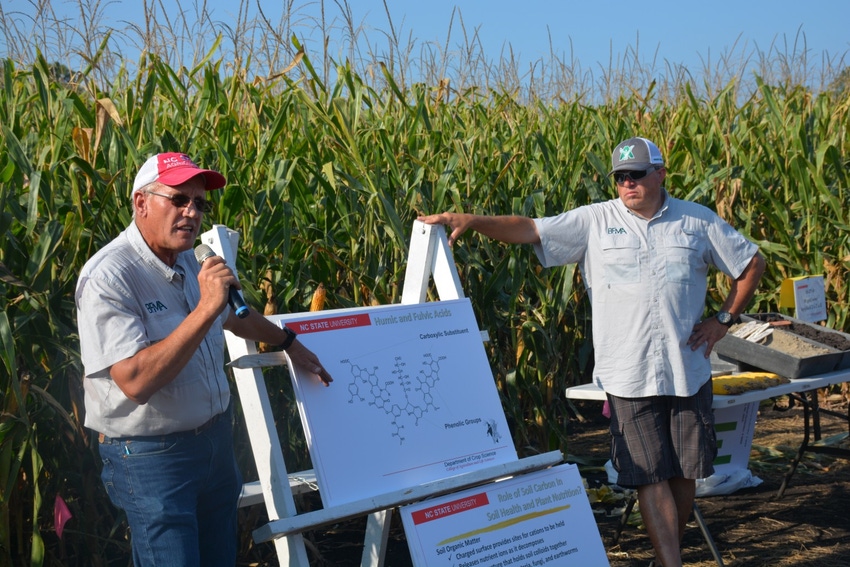
Understanding the above ground biology of corn is easy, because you can see how tall the plants are and how green the leaves are to help you determine just how healthy your crop is. The challenge is understanding the below ground biology of corn, which is actually more important than the above ground biology.
“There is a lot going on in these soils that is very important to our corn crop, not just this year but long-term. In a teaspoon of soil there are billions of organisms and activity happening all the time,” says North Carolina State University Extension Corn Specialist Dr. Ron Heiniger.
Speaking at the Blacklands Farm Managers Tour at the Coastal Carolina Gin in Fairfield, N.C., Heiniger named six different organisms in soil that are critical to the development of a healthy corn plant. The six organisms are bacteria, fungi, protozoa (single cell water organisms), beneficial nematodes, arthropods, and earthworms.
Heiniger said the nematodes are beneficial because they feed on the fungi. Earthworms are the only organisms seen by the naked eye, but Heiniger stressed the organisms you cannot see are the most important for crop health.
“You can’t see bacteria. There is a wide range of different bacteria in the soil that do a lot for us. They decompose the residue, form symbiotic relationships with the roots of the plant, they help the plant by providing nutrients that the plant can’t extract in other ways. Fungi do many of those activities as well. Bacteria and fungi are the most important in the activity of that soil,” Heiniger said.
It’s important to remember that bacteria and fungi need something to eat: Soil carbon.
“They exist on the carbon resources in our soil. The two go hand in hand. It’s important to have soil organic matter. It’s not just for building structure, it is for building that community of bacteria and fungi in our soil,” Heiniger said.
The short chain carbons humic acid and fulvic acid are important to soil health. Heiniger explains that when you work the soil, humic acid and fulvic are the first to get oxidized. Maintaining humic acid and fulvic acid is important for the feeding of the bacteria and fungi in soil.
There are a number of compounds now available to enhance the biological community of the soil and increase humic acid and fulvic acid in the soil. In research conducted across North Carolina, Heiniger and his team are examining several products that can be applied to provide humic acid and fulvic acid as well as micronutrients and fertilizer.
Among the products being researched is Midnight that provides humic acid, fulvic acid, nitrogen, potassium and phosphorus. In the research plot at Fairfield, Heiniger and his crew applied Midnight at the V3 growth stage.
The team is also researching Levitate, a combination of 5-15-5 or a fertilizer, that was applied at five gallons per acre. “Levitate has fulvic acid to enhance the feeding of those microorganisms,” Heiniger explained.
The North Carolina State scientists are also examining Radiant, a growth hormone, designed to add more roots to the corn plant.
Heiniger said the benefits of these various compounds won’t be fully known until the crop is harvested, but he says they do show promise. Through it all, Heiniger says farmers do need to find ways to improve soil health and increase soil carbon to build yields and improve plant health.
“Our future productivity rests in our soils and the health of our soils depends on how we manage soil biology,”Heiniger says.
About the Author(s)
You May Also Like






